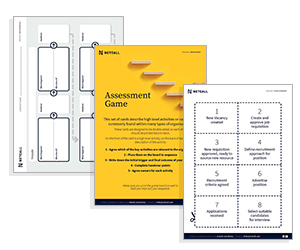Emotions play a crucial role in shaping brand loyalty and nurturing long-term customer relationships.
That’s why industry leading contact centres harness this emotional intelligence to set themselves apart with unforgettable experiences.
The best part? This is only the beginning! So, what does the future hold? We asked our expert panel to find out…
1. We’ll Refine How We Interpret Customer Feelings – Not Just What They Tell Us, But How They Perceive Us

I’m already seeing signs we’re moving beyond traditional sentiment and CSAT metrics, which gauge frustration and satisfaction, towards deeper emotional insight.
Over the next 5–10 years, advancements in biometrics / body language and predictive analytics will refine how we interpret customer feelings – not just what they tell us, but how they perceive us. Machine Learning and AI tools already make some of this possible today, but this is rapidly evolving.
Contributed by: Lewis Gallagher, Senior Solutions Consultant, Netcall
2. Emotion-Aware Routing and Predictive Intervention Will Become the Norm

Emotion-aware routing, predictive intervention, and AI-driven coaching will become the norm.
But this evolution won’t just be technical, it will demand a cultural shift too. We’ll need to build ethical, inclusive frameworks to ensure emotional insights aren’t used just to nudge behaviour but to genuinely support and boost customers.
The future of emotion in the contact centre isn’t just about reading the room, it’s about reshaping the room to make every customer feel heard, valued, and understood.
Contributed by: Tara Aldridge, Strategic Services Director, Vonage
3. Virtual Agents Will Become Far More Empathetic

Think of your virtual agent as the voice of your brand. For too long, it’s been a monotone script, a robotic hollow drone echoing, “Your call is important”. But agentic AI is changing the tune!
It provides empathetic depth and harmony to a conversation’s melody, allowing your virtual agent to align with the many nuanced emotions underpinning human feelings (tied to auditory perception).
Just as 3D emojis revolutionized texting by replacing simple text-based smileys with hundreds of colourful telegraphed expressions, agentic AI will bring a richer, more human hue and tone to customer interactions.
Contributed by: Toussaint Celestin, AI Product Marketing Manager, Talkdesk
4. We’ll Know the Best Time to Catch a Customer in a Good Mood

It’s so exciting to consider the role of biometric data in the future of customer engagement.
There’s so much data available already with wearable devices – such as heart rate and blood pressure – that can indicate whether someone is feeling calm or stressed (for example).
So just imagine how that information could be harnessed to reach out to customers with a callback or promotional offer when they are in the best possible mood to receive it.
Of course, this brings up some ethical dilemmas around hyper-personalization and could even be considered creepy, but it’s exciting to think about the art of the possible and how closely we could tune into customer emotions in the future.
Contributed by: Sandra Thompson, CEO and Founder of Ei Evolution
5. We’ll See Negative Emotions as Opportunities Instead of Warning Signs

Today, sentiment analysis primarily acts as a trigger, escalating interactions from bots to agents or from agents to supervisors when negative emotions arise.
However, its future lies in transforming emotion from a warning sign into an opportunity.
For example, rather than just detecting dissatisfaction, AI will gain maturity, understanding emotion and shaping real-time customer experiences, dynamically adjusting responses, tone, and even solutions.
Contributed by: Nicolas Marcoin, Product Marketing Manager, Odigo
6. Customers’ Emotional Reactions to Previous Purchases Will Allow Brands to Tailor Their Future Offerings

Understanding customers’ emotional reactions to previous purchases will allow brands to tailor their product offerings.
These insights will guide the development of products and services that meet customers’ emotional needs, fostering trust and improving ongoing engagement for the contact centre.
By proactively addressing emotions, companies will be able to create deeper relationships and drive long-term customer loyalty.
Contributed by: Taoufik Massoussi, AI Product Manager | Insights, Enghouse Interactive
7. Contact Centres Will Invest in Emotional Intelligence Training Just as Seriously as Product Knowledge

As automation and agentic AI handle more routine enquiries, the role of human agents will shift, and emotional intelligence will become their defining skill.
Rather than being replaced outright, the agents who remain will handle the most emotionally complex, high-stakes, or brand-defining interactions.
That means being genuinely empathetic, perceptive, and capable of navigating nuance will matter more than ever. Contact centres will need to invest in emotional intelligence training as seriously as they once did product or policy knowledge.
Contributed by: Tatiana Polyakova, COO, MiaRec
8. There Will Be More Emphasis on Relationships (Instead of Just Transactions)

There’s lots of valuable feedback you can currently gain from measuring customer emotion, and the possibilities will only continue to grow in future.
The good news is that this will help to remove some of the barriers between customers and agents, so agents can focus on building relationships – not just managing transactions and adhering to strict metrics.
But… Only if the situation is managed well, as contact centre leaders will have to be careful to use these new insights to drive meaningful action – not just create more reports.
Contributed by: Michel Stevens, Customer Experience Master (CXM)
9. Analytics Will Evolve to Interpret Tone, Speech Patterns, and Even Pauses

Over the next 5–10 years, contact centres will move beyond traditional sentiment analysis toward a more holistic approach to understanding customer emotion.
AI-driven analytics will evolve to interpret tone, speech patterns, and even pauses in conversation, providing real-time emotional insights. These insights will empower agents with proactive recommendations, ensuring empathetic and highly personalized interactions.
And advancements in natural language processing (NLP) and real-time feedback tools will enable virtual agents to detect frustration or satisfaction and adjust responses dynamically.
Looking ahead, emotion-driven automation will further refine predictive analytics, allowing businesses to anticipate customer needs before issues arise.
Contributed by: Thomas John, VP EMEA, Five9
10. AI Will Be Able to Detect Sarcasm Too

We’ve found that when someone raises their tone – relative to how they normally speak – they often change their vernacular as well. So, if someone is expressing strong satisfaction or dissatisfaction, it’s not just how they say it, but what they say that changes. Their language shifts alongside their tone.
That’s why we prioritize what’s being said over how it’s being said – with purpose-built AI that has the ability to understand and apply logic across multiple statements. So even when someone is stating something that could be construed as negative in a vacuum, we can see the context and do a good job at accurately spotting things like sarcasm. This helps reduce bias and improves accuracy, especially across diverse populations.
Contributed by: Brett Forman, Head of Advanced Analytics – Customer Service Automation, NICE
Contact Centres Are Moving Beyond Basic Metrics
AI, sentiment analysis, and real-time feedback tools now allow contact centres to understand the emotional undercurrent of every conversation, and this will only continue to improve in future.
Whether it’s identifying frustration, signalling emotive discourse, or tailoring agent prompts, we’re seeing a new level of responsiveness emerge, one that’s less about handling volume and more about handling people.
Emotion is no longer a concept, it’s a data point, a differentiator and, increasingly, a strategic priority. How will you harness it?
For more great insights and advice from our panel of experts, read these articles next:
- New Ways to Empower Agents in 2025
- From Chaos to Control! Why Contact Centres Are Prioritizing WFM Solutions
- Can AI Really Handle Customer Complaints?
- Quick Wins to Improve Your C-Sat Scores
Author: Megan Jones
Reviewed by: Jo Robinson
Published On: 15th Apr 2025 - Last modified: 16th Apr 2025
Read more about - Technology, Customer Service, CX, Emotion, Enghouse Interactive, Five9, Lewis Gallagher, MiaRec, Michel Stevens, Netcall, NiCE, NiCE CXone, Nicolas Marcoin, Odigo, Sandra Thompson, Talkdesk, Tara Aldridge, Tatiana Polyakova, Thomas John, Top Story, Toussaint Celestin, Vonage




















